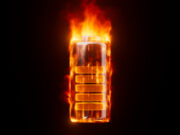The U.S. Federal Aviation Administration (FAA) wants to change airworthiness regulations that govern fire protection inside transport category airplanes to convert existing prescriptive requirements into what it says will be simpler, performance-based standards.
Those standards also would be applied to “any extensively used material in an inaccessible area” such as insulation, electrical wiring and cargo compartment ceilings and floor liners, the FAA said.
According to a notice published in the Federal Register Wednesday, the FAA said the changes would “result in a safety benefit by reducing the likelihood of a fatal accident from a fire in an inaccessible area.” That likelihood has increased in recent years because of in-flight fires and the growing presence of lithium ion batteries to power personal electronic devices, the notice said.
The notice said that the proposed amendment would divide the standards into two categories, one involving in-flight fires and the other, post-crash fires.
The amendment also would remove an existing requirement for specific methods of testing fire protection standards involving materials used in aircraft interiors and instead allow companies applying for airworthiness certificates to demonstrate compliance with the standards without conducting the tests or by providing an independent substantiation of the materials’ flammability characteristics. The change would “eliminate unnecessary testing, increase standardization and improve safety,” the FAA said in the Federal Register notice, adding that simplification of the requirements is possible “from a safety perspective, because of other proposed changes that would compensate for removing requirements.”
The proposed rule would organize fire protection requirements according to the type of fire (in-flight or post-crash) that is considered likely to affect a particular component or material, “rather than basing such standards on the part’s composition or function,” the notice said.
The proposal also would apply to any extensively used material in an inaccessible area, the notice said, adding that extensively used materials are considered “any parts or system of parts that could permit a fire to propagate and grow to a hazardous level, for example, air ducting, electrical wiring/sleeving, thermal/acoustic insulation and composite fuselage structure.”
The notice said that current requirements, outlined in U.S. Federal Aviation Regulations Part 25, specify fire protection requirements according to the function of each aircraft component, and sometimes, according to that component’s composition. The existing requirements also discuss specific mandatory testing methods.
This specificity “can create difficulties when an applicant wishes to deviate from the detailed test provisions, for example, to implement improvements,” the notice said. “Also, a given component can be subject to multiple regulatory requirements depending on the component’s composition, and the requirements may conflict with one another.”
In some cases, determining the applicable requirements is difficult, especially when new components or new materials are being used, the notice said.
The FAA will accept public comments for 90 days after publication of the proposal.

